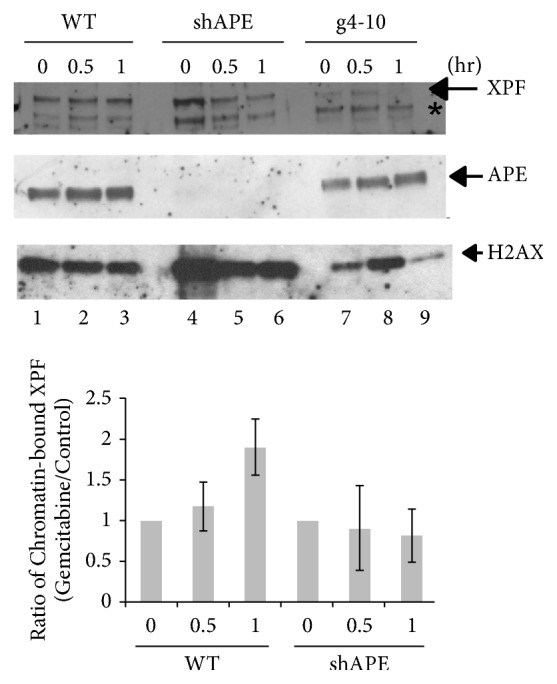Figure 3.

Gemcitabine-induced recruitment of XPF to chromatin depends on APE. HCT116, APE-suppressed HCT116 (HCT116 shAPE), and XPF-deficient HCT116 (HCT116 g4-10) cells were treated with 1 μM of gemcitabine and chromatin fractions were isolated in the indicated time. The presence of XPF and APE was detected by western blots. The asterisk (∗) shows a cross-reacted protein with the anti-XPF antibody. Histone H2AX was used as a loading control. Gemcitabine-induced recruitment of XPF to chromatin (lanes 1-3) was compromised in HCT116 shAPE cell line (lanes 4-5). The chromatin-bound APE is not changed by the gemcitabine treatment (lanes 4-6, Supplementary Figure 5). A signal of XPF (and APE) was normalized with a signal of H2AX in each chromatin fraction using ImageJ software. Then a ratio of chromatin-bound XPF with gemcitabine to XPF in control was determined and depicted as bar graphs. Three independent experiments were performed and averages of the ratio at indicated time points were plotted. The error bars show standard deviations. Only the difference in the chromatin-bound XPF between chromatin from control experiments and chromatin that was incubated one hour with 1 μM gemcitabine is statistically significant in HCT116 (p<0.05).
